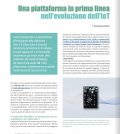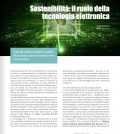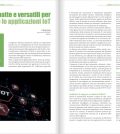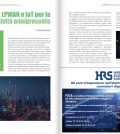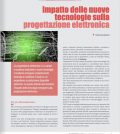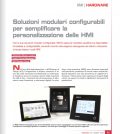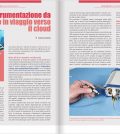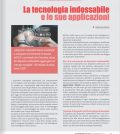Key Trends & Technologies in 2015
There are a number of dynamics that we expect to have huge influence on the electronics industry over the next 12 months. It is clear that companies need to be able to respond both quickly and decisively to them if they are going to prosper.
Within the automotive sector, the greater prevalence of LED lighting is already allowing marked improvements in energy efficiency and operational lifespan to be witnessed, as well as a far higher degree of design flexibility. This will continue with many models becoming fully reliant on LEDs for all their illumination activities – front lights, read lights, side lights and interior lighting. In 2015 car manufacturers will look to utilize more sophisticated lighting technologies.
For example, LED laser light is being featured in the i8 from BMW and the latest version of the Audi R8. Laser light offers even greater energy savings than are possible with standard LEDs. Other exciting new technologies such as Matrix and Pixel-Light will enable shaping of the vehicle’s front beam via the turning on, off or dimming discrete LED emitters. Through this sections of the beam can be blocked out to reduce glare upon the detection of the front lights of vehicles travelling in the opposition direction. The beam can also be moved in order to anticipate bends in the road and slopes. This will eliminate the need for inclusion of bending motors – thereby curbing bill of materials costs, as well as helping to lower vehicles’ weight.
There is another major change occurring in the automotive sector. Car manufacturers will soon start to implement autonomous control functions into the next generation of vehicle models they bring to market. Through advanced driver assistance systems (ADAS) the safety of road users will be significantly improved, through use of features such as breaking intervention, collision avoidance, lane change assistance, blind spot monitoring and lane departure warning. These features will rely upon a combination of advanced sensor devices and high speed connectivity.
Demand for more energy efficient electronics is destined to have important implications for the future of power system design. It is forcing the industry to look at new semiconductor process technologies, such as gallium nitride (GaN) for example – which offers a wider band gap, higher thermal conductivity and faster switching speeds than conventional silicon power transistors are able to achieve.
Industry analysts have predicted that the global GaN business will be worth $1.75 billion by 2022. In relation to this ON Semiconductor has entered into a partnership with Transphorm. The two companies will collaborate on the development and marketing of GaN-based products that will address this mounting commercial requirement – allowing greater power conversion performance and higher power density levels to be realized.
The Internet of Things (IoT) is likely to be the biggest phenomenon to effect the electronics industry in over a decade – with the prospect of billions of previously isolated devices (from domestic appliances to office equipment, from gym machines to smart meters) being able to interact with one another. The greatest challenges we envisage to IoT roll-out will be ensuring interoperability and standardizing communication.
Image sensing technology is becoming of greater importance all the time, with a growing need for better quality video surveillance, industrial inspection and automotive safety systems. During 2014, ON Semiconductor completed the acquisition of Aptina (which produces leading-edge CMOS image sensors), followed by the acquisition of Truesense Imaging (which specializes in CCD image sensors).
Both these companies are recognized leaders in image sensing, and by combining this expertise with our existing intellectual property in this area we are now very well positioned in this market – holding the number 1 spot in automotive image sensors and number 2 in industrial image sensors. We have further underlined our strength here with the recent introduction of the PYTHON 2000 and PYTHON 5000 high resolution CMOS image sensor devices, which are targeted at applications like machine vision.
Through a mixture of organic growth and well-timed acquisition activity, ON Semiconductor has steadily expanded its operations over the course of 2014 and we are confident that this will continue into 2015. In the coming year we will follow a strategy that primarily focuses our resources on serving the market sectors where we see greatest opportunity arising. These are the automotive market, the wireless market and also certain specific parts of the industrial market.
By broadening our product portfolio in these areas we will be able to provide customers with more comprehensive offering, including power management, signal management, image sensing, logic, circuit protection, analog, mixed signal, digital and discrete devices, so that they are furnished with all the component parts they need to create complete, function-rich and highly effective system solutions.
David Somo, vice president of Corporate Strategy & Marketing, ON Semiconductor
Contenuti correlati
-
Una piattaforma in prima linea nell’evoluzione dell’IoT
I livelli di produttività e le caratteristiche all’avanguardia della piattaforma Serie 3 di Silicon Labs di prossima introduzione permetteranno lo sviluppo di nuove applicazioni e di funzionalità innovative nei più diversi settori, dalla produzione alla vendita al...
-
Sostenibilità: il ruolo della tecnologia elettronica
Grazie alle soluzioni sostenibili è possibile ridurre sprechi, consumo di energia e oneri di manutenzione Leggi l’articolo completo su EO 521
-
Antenne compatte e versatili per migliorare le applicazioni IoT
La scelta dell’antenna giusta può rivestire un’importanza fondamentale per il successo di un’applicazione IoT (Internet of Things) wireless. Un’antenna in grado di offrire prestazioni elevate e la flessibilità necessaria per supportare reti differenti può contribuire a migliorare...
-
5G, LPWAN e IoT per la connettività onnipresente
In questo articolo viene descritta la necessità di una connettività che sia presente in ogni luogo sfruttando le tecnologie 5G, LPWAN e IoT. Inoltre, vengono descritti sinteticamente i capisaldi dell’architettura della rete 5G, della rete LPWAN e...
-
Impatto delle nuove tecnologie sulla progettazione elettronica
La progettazione elettronica è un campo in continua evoluzione e nuove tecnologie e tendenze emergono costantemente destinate a modellare il modo in cui progettiamo e produciamo dispositivi elettronici. In questo articolo descriveremo l’impatto delle tecnologie emergenti sulla...
-
Una nuova iniziativa per l’interoperabilità per l’IoT industriale
Si chiama Margo la nuova iniziativa per fornire interoperabilità per gli ecosistemi IoT industriali nata dalla collaborazione tra ABB (inclusa B&R), Capgemini, Microsoft, Rockwell Automation, Schneider Electric (inclusa AVEVA) e Siemens. Questa iniziativa è ospitata dalla Linux...
-
Monitoraggio dei processi industriali con il microcontrollore ESP32
Un sistema di monitoraggio dei processi industriali è molto utile per la piccola e media industria per ottenere il massimo rendimento della produzione ed evitare guasti ai macchinari e incidenti. Un sistema di monitoraggio e sicurezza semplice...
-
Soluzioni modulari configurabili per semplificare la personalizzazione delle HMI
Con le sue soluzioni modulari configurabili, SECO assicura il perfetto equilibrio tra disponibilità immediata e configurabilità, venendo incontro alle esigenze eterogenee dei clienti e riducendo al tempo stesso i costi NRE Leggi l’articolo completo su EMB92
-
La strumentazione da laboratorio in viaggio verso il cloud
La tendenza è chiara: il software assume un ruolo sempre più importante nelle misurazioni. E anche se per il momento si è ancora lontani dall’aver trovato applicazioni che sostituiscano gli strumenti più evoluti, miniaturizzazione, connettività IoT e...
-
La tecnologia indossabile e le sue applicazioni
I dispositivi indossabili hanno contribuito a sviluppare enormemente l’industria dell’IoT e si prevede che l’industria stessa dei dispositivi indossabili raggiungerà nel mercato mondiale i 100 miliardi di dollari entro il 2027 Leggi l’articolo completo su EO 516


